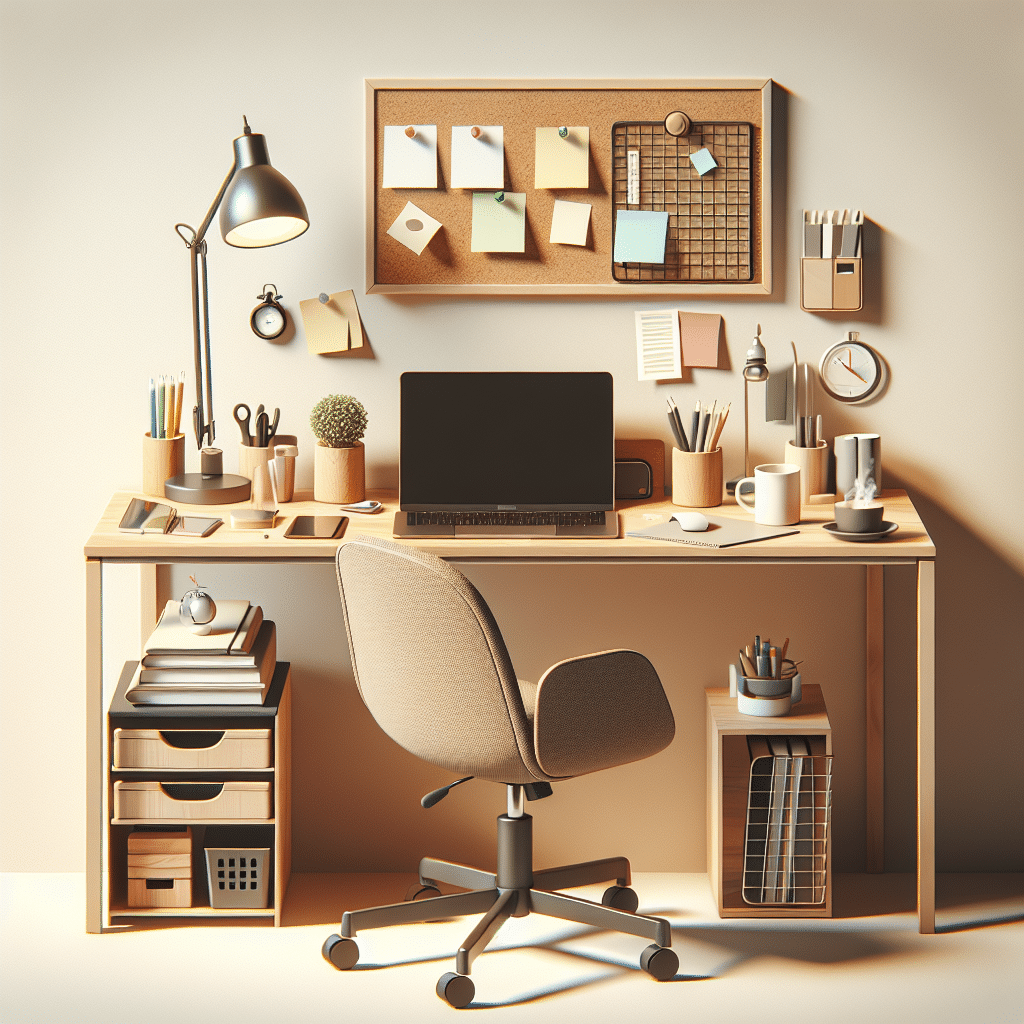Understanding the Needs of Your Compact Workspace
Creating an efficient compact workspace begins with assessing your specific needs. Consider the tasks you’ll be performing, the time you plan to spend in this area, and the tools that are essential for your work. Having a clear understanding of your requirements is the first step to an effective setup.
Choosing the Right Location
The location of your workspace is crucial in influencing productivity. Look for a quiet corner in your home or office that’s free from distractions. Natural light can significantly boost morale and energy levels, so position your desk near a window if possible. If your compact workspace is in a shared area, consider using room dividers or shelving units for privacy.
Selecting Your Furniture Wisely
The choice of furniture in a compact workspace plays a significant role in maximizing efficiency. A desk that fits your space but still provides ample surface area is essential. Consider the following options:
- Wall-Mounted Desks: These save floor space and can often be folded up when not in use.
- Corner Desks: Perfect for utilizing otherwise wasted space while providing a functional work surface.
- Height-Adjustable Desks: These can help maintain a comfortable working position, allowing you to switch between sitting and standing.
Investing in an ergonomic chair is equally important. An adjustable chair supports good posture and ensures comfort, especially during long working hours.
Storage Solutions
In a compact workspace, effective storage solutions are critical. Maximizing vertical space can greatly enhance your organization. Here are a few suggestions:
- Shelving Units: Install open shelving above your desk to store books, documents, and office supplies. This keeps essential items within reach without cluttering the desk.
- Under-Desk Storage: Use drawers or rolling carts to store materials that aren’t used frequently. This keeps your workspace tidy while making access easier.
- Organizers and Bins: Utilize drawer organizers or storage bins to categorize and manage supplies. Labeling each container enhances visibility and quick access.
Cable Management Strategies
A tidy workspace is not just about physical clutter; managing cables is also crucial. Here are some effective strategies for cable management:
- Cable Trays: Install these along the back of your desk to conceal cords and prevent tangling.
- Cable Clips: Use adhesive clips to guide cables along walls or desk edges, keeping them organized.
- Wireless Options: Whenever feasible, opt for wireless devices such as mice and keyboards to minimize cable clutter.
Lighting Considerations
Lighting significantly affects productivity and comfort. In compact workspaces, layered lighting can create a comfortable atmosphere:
- Task Lighting: A good desk lamp with adjustable brightness helps reduce eye strain and improves focus.
- Ambient Lighting: Soft overhead lights provide general illumination, while accent lights can create a cozy atmosphere.
- Natural Light: Whenever possible, maximize natural light. Position your workspace near windows and use light-colored curtains to diffuse glare without blocking brightness.
Personalization and Motivation
Adding personal touches to your workspace can enhance motivation and make the area feel more inviting. Here are ways to personalize without overcrowding:
- Artwork: Hang a few pieces of inspiring art or photos that resonate with you.
- Plants: Incorporate small indoor plants; they not only improve air quality but also create a calming atmosphere.
- Vision Boards: Create a vision board with goals, inspirations, or quotes that can keep you focused on your objectives.
Implementing a Zone System
In a compact workspace, creating zones can help keep your environment organized. Designate specific areas for certain activities. For example:
- Work Zone: This is your primary area for tasks, equipped with your computer and essential work materials.
- Creative Zone: A corner or shelf for brainstorming materials, drawing supplies, or any creative tasks can keep your focus clear.
- Relaxation Zone: Even in compact spaces, having a small chair or cushion for breaks can recharge your mind.
Time Management Tools
In a compact workspace, managing your time effectively is paramount. Utilize various tools to enhance productivity:
- Task Boards: Use a whiteboard to track tasks and deadlines. Breaking larger projects into smaller tasks can prevent overwhelming feelings.
- Digital Tools: Consider apps like Trello or Asana for project management, ensuring you can efficiently allocate your time.
- Timers: Implement techniques like the Pomodoro Technique, using timers to work in focused bursts followed by short breaks.
Minimalism is Key
Adopting a minimalist approach can help maintain clarity and focus in your compact workspace. Here are tips to enhance minimalism:
- Declutter Regularly: Schedule regular intervals to evaluate what’s necessary and remove items that don’t serve a purpose.
- Limit Decor: Keep decorations to a minimum, featuring only a few thoughtfully selected pieces that inspire and motivate.
- Digital Organization: Streamline your digital files as well, maintaining a tidy digital workspace to complement your physical area.
Incorporating Technology Efficiently
Utilize technology to enhance your compact workspace without overcrowding it. Here’s how to do it effectively:
- All-in-One Printers: These take up less space than traditional printers and provide copying and scanning features as well.
- Monitors: Consider using a larger monitor instead of multiple smaller screens, as this saves space while providing ample workspace.
- Smart Assistants: Devices like Amazon Echo or Google Nest can help manage tasks and control smart devices with minimal desk usage.
A Flexible Approach
As needs change, your workspace should evolve as well. Keeping flexibility in mind allows for adjustments based on altered priorities or project requirements. Here are some ideas for maintaining flexibility:
- Modular Furniture: Look for furniture that can be reconfigured or moved easily to adapt to new setups or tasks.
- Multipurpose Items: Choose desk accessories that can serve multiple functions, such as a bookcase that doubles as a workspace extension.
Creating an efficient compact workspace involves thoughtful planning and organization. By focusing on essentials, optimizing your environment, and embracing flexibility, you can craft a functional space, enabling maximum productivity and creativity in a compact footprint.
